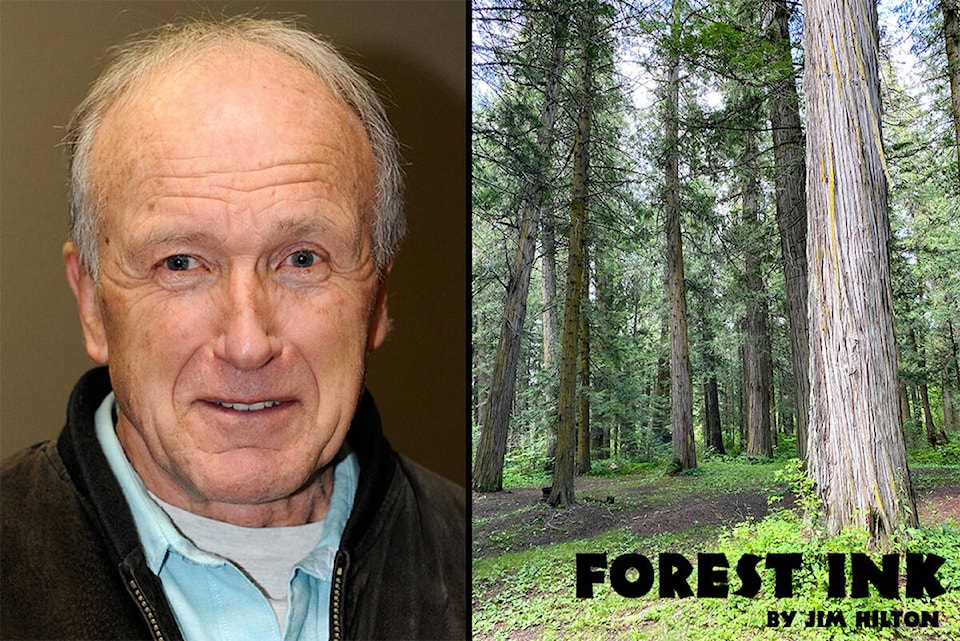When I first started writing articles for the Tribune in 2014 I discussed some better ways to deal with residual logging debris including making biochar which could be used as a soil amendment. There was not much information available apart from YouTube videos on how it could be produced in your back yard with a variety of home made burners.
A friend passed on a recent publication in PHYS.ORG about some research being done in the University of Aarhus in Denmark. Their work is based on the comprehensive life cycle analysis of data from China which has the world’s largest agricultural systems and is the world’s biggest emitter of greenhouse gases.
Out of necessity China has identified an integrated biomass pyrolysis and electricity generation system coupled with commonly applied methane and nitrogen mitigation measures. With the right management of agricultural land it can significantly reduce greenhouse gas emissions from Chinese staple crops.
Biochar is described as the New Black in reference to the importance of fossil fuels in industrial agriculture and the ongoing need to become carbon neutral. Management methods alone will not pave the way for climate-neutral food production. More research is needed, and pyrolysis of straw into biochar could prove to be part of the solution since it has the potential to reduce greenhouse gas emissions and at the same time increase the soil’s organic carbon content.
Using biochar in rice fields can significantly reduce methane emissions because the organic carbon in biochar decomposes much more slowly than straw. The slower decomposition means the carbon from the biochar is sequestered in the soil for a longer time, it is a more long-term solution than straw.
The research also shows biochar can also help reduce nitrous oxide emissions. (N20 is hundreds of times more polluting than CO2). Also known as laughing gas, N20 is produced through a complex microbial processes in the soil that inhibit denitrification, where nitrate is converted into nitrous oxide and other gases.
An environment reporter Madeline Cuff writing for New Scientist, describes how optimizing fertilization strategies is crucial for obtaining high crop yields and efficient N utilization.
“This study aimed to understand the potential increase in crop yield and the N utilization efficiency under biochar-based fertilizer (BF) in a maize–Chinese cabbage rotation system. Biochar-based slow-release fertilizer (BF) is an important nutrient-efficient management strategy.”
The yields and growth-related traits of the crops, N utilization efficiency, quality, and dynamic changes in soil inorganic N in a maize-cabbage rotation are being studied.
Another interesting information source is the China biochar story from crop straw and biochar industry by Genxing Pan of the Biomass and Biochar Green Technology Center at the Nanjing Agricultural University in China.
The author uses pictures and charts to show the history of the using straw in pyrolysis rather than burning it in the fields. The worst case scenario in the past was the toxic smoke coming from the fields producing harmful gases along with wasting the biochar and potential fuel sources.
In summary the studies show that with this integrated pyrolysis and power generation system, combined with commonly used management methods to reduce methane and nitrous oxide emissions,it is possible to achieve carbon-neutral production of staple crops in China. Carbon neutrality refers to a state where the sum of emissions of all greenhouse gases (CO2, methane and nitrous oxide ) from crop production is offset by CO2 removal through carbon sequestration in the soil and CO2 compensation through lower fossil fuel consumption.
READ MORE: FOREST INK: Company invests $10M in biochar
READ MORE: FOREST INK: Recovering degraded urban areas with Miyawaki Forests
monica.lamb-yorski@wltribune.com
Like us on Facebook and follow us on Twitter
